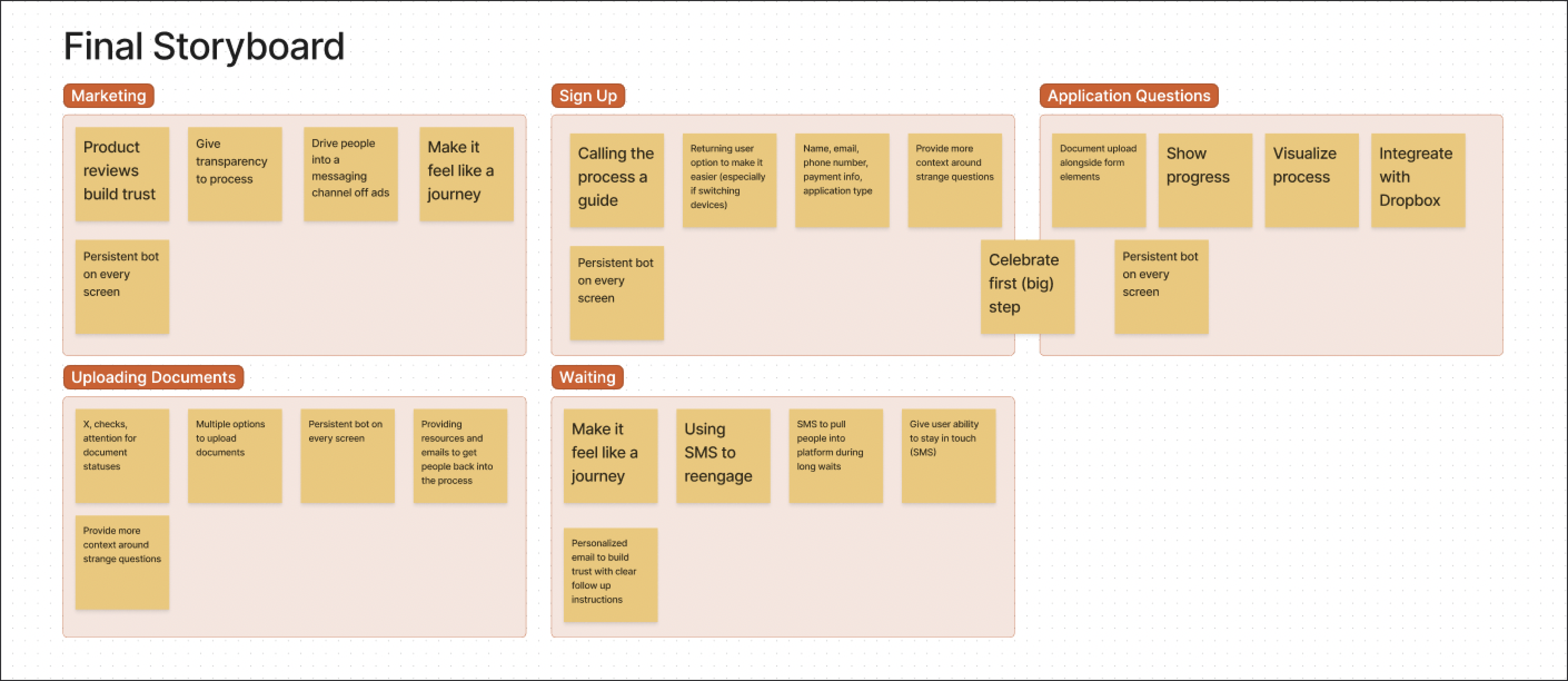The final storyboard is the final Converge exercise and should be used to focus on what the team will be prototyping.
Requirements
- Estimated time needed: 2 hours
- Team: Facilitator, Note-taker, Stakeholders
Why should we do this exercise?
We need something that distills all of our great ideas into a single cohesive storyboard to build during the next phase.
Instructions
This exercise can be tricky and take long time, to make things easier here are some exercises to try:
Beginnning & End
If you're stuck on where to begin start with the first screen, if this is too hard, try starting at the end instead, it's often easier to imagine the end of the journey than the beginning.
Work with what you have
Grab everything you've done far and use it as inspiration. The Problem Statement, Sprint Questions, and Critical Path will be particularly helpful.
Try to resist inventing new ideas, and refer to all the ideas you've collected earlier instead.
Scrapbook
If you ran the Art Museum exercises you've got a head start:
- Immediately bring over all the ideas with supervotes and straw poll votes.
- Put the ideas in order of where they could happen in your storyboard.
- If some things overlap break up the ideas into smaller chunks and combine them.
- If you still have gaps bring some of the other ideas with lots of Heat Map votes to fill in the gaps.
You should eventually get a very scrappy looking storyboard ready to refine.
Tips
- Just enough detail: Include enough that your team understands the storyboard, nothing more, we need this as a guide to build a prototype, this isn't a blueprint.
- The decider decides: If you're struggling with a decision refer to the decider.
- Take risks: If in doubt choose the solution that is the highest-risk highest-reward, sprints are great at quickly validating risky or unique ideas.
- Keep it short: Try to keep the storyboard to about 3 minutes or less, and skip boring parts. We won't have much time with our users so show them the best bits. You can ask them questions about anything else.
